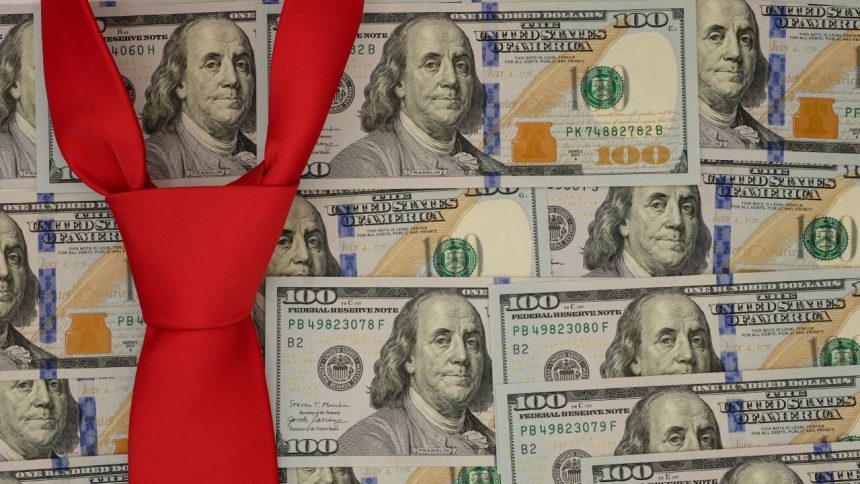Ganna Zelinska/Getty Images
Key takeaways
- Federal Reserve Chair Jerome Powell reaffirmed the central bank’s independence, resisting political pressure to lower rates until economic data justifies it.
- With no immediate rate cuts expected, high-yield savings accounts are still offering strong returns above 4 percent APY.
- Now is still a great time to open a new savings account with a competitive APY, low fees and minimal deposit requirements.
Another week, another rattled market — at least that’s how it seems to be going these days.
Stocks tumbled after President Donald Trump urged Federal Reserve Chair Jerome Powell to lower interest rates. But Powell indicated that the Fed won’t lower interest rates until the data suggests the economy is ready.
That’s good news when it comes to annual percentage yields (APYs) on deposit accounts, including high-yield savings accounts, since leaving the federal funds rate elevated means that yields may stay high for a while longer. Top yields on savings accounts currently go beyond 4 percent APY, which is still robust even if interest rates have dipped from a recent peak.
What are today’s best savings accounts and rates?
BrioDirect’s high-yield savings account remains the top-notch offering (4.45 percent APY) among the dozens of accounts Bankrate monitors and reviews. The downside is that you’ll need at least $5,000 to open this account. So, if you’ve got less cash readily available but still want a top yield, Bread Savings and Openbank remain good alternatives.
Federal Reserve signals it won’t respond to political pressure
While the Federal Reserve — the U.S. central Bank — is an independent agency, President Trump’s harsh comments on social media about Fed Chair Jerome Powell still rattled markets, as Trump demanded the Fed lower the federal funds rate. Despite mounting pressure from the White House, Powell says he’s firm on not rushing to cut interest rates.
“Generally speaking, Fed independence is very widely understood and supported in Washington, in Congress, where it really matters,” Powell said at an appearance at the Economic Club of Chicago. “The point is we can make our decisions, and we will only make our decisions based on our best thinking, our best analysis of the data about what is the way to serve or to achieve our dual mandate goals. We are never going to be influenced by any political pressure. […] Our independence is a matter of law.”
Those comments signal business as usual for the Fed — at least as far as the federal funds rate and the central bank’s dual goals of achieving price stability and maximum employment are concerned.
There’s a relationship between the federal funds rate and APYs on deposit accounts, including high-yield savings accounts. The Fed takes a restrictive monetary policy stance when it hikes the federal funds rate, and banks tend to react by increasing the deposit yields to attract and retain depositors. Conversely, when the Fed cuts the benchmark rate, APYs also tend to dip.
The Fed began lowering interest rates in September 2024, after months of leaving the federal funds rate relatively high and unchanged, which, in turn, left us with elevated APYs. But following that first rate cut in September, deposit account yields dipped, falling from a peak not seen in more than a decade. The Fed was poised to continue this trajectory — and experts anticipated that APYs would continue falling — but the Fed paused cutting rates in March, citing economic uncertainty.
The level of tariff increases announced so far is significantly larger than anticipated, and the same is likely to be true of the economic effects, which will include higher inflation and slower growth.
— Jerome Powell | Chairman, Board of Governors of the Federal Reserve
Tensions between the White House and the Fed have at least eased for now after Trump commented that he has “no intention” of firing Powell, though he’s still calling for the federal funds rate to be lowered.
Is it still a good time to open a high-yield savings account?
In short: yes. If the Fed continues its rate pause, that could mean that deposit account yields will stay elevated for a while longer, especially as economic uncertainty continues to linger. Thus, it’s still a great time to open a new savings account.
According to Bankrate’s latest Checking Account Survey, many consumers stick with the same bank accounts for decades, with 43 percent citing convenience as a factor. But opening a new high-yield savings account is really easy, and unlike credit cards, you can open as many as you want without worrying about consumer reporting agencies.
Here’s what to look for in a high-yield savings account
- A top rate: A high APY will help your nest egg grow faster. Top APYs are currently above 4 percent, with the top yield currently at 4.45 percent APY.
- No monthly fees: Even low monthly maintenance fees can cut into your savings over time. Accounts that come without fees — effectively free — will help maximize the cash you contribute to your savings account.
- Low or no minimum deposit: This only really matters when first opening an account, but if you don’t have a lot of money on hand at the start, you’ll want to search for an account that has a low (around $100 or so) or no minimum deposit requirement.
- High or no withdrawal limit: Prior to the COVID-19 pandemic, the Federal Reserve required that savings and money market accounts limit withdrawals to just six per month. The central bank has since removed that rule, but some banks are still limiting withdrawals to just six. For those months that you need to dip into your savings a bit more, having an account without a withdrawal limit will mean you won’t shell out money in extra fees.
Bankrate’s take
Did you know that high-yield savings accounts pay about 20 times more in interest than the national average on standard savings accounts? Delve deeper into the workings of high-yield savings accounts, and what factors to consider before opening one, with Bankrate’s guide: what is a high-yield savings account?
What’s next for savings accounts?
The Fed will continue to monitor inflation, as the central bank’s goal is to bring the inflation rate down to about two percent. While the most recent Consumer Price Index showed that inflation actually slowed, experts don’t anticipate this trend to continue if the White House moves forward with tariffs.
Fed officials will meet again in May to decide whether the central bank will continue its pause or further cut rates. If the Fed leaves the federal funds rate untouched, APYs are expected to remain elevated. But we can expect to see APYs slide if the Fed does determine they can cut rates. We’ll have an answer on May 7.
Bottom line
Despite political pressure to cut rates, the Federal Reserve is holding steady — and that’s good news for savers, as high-yield savings account APYs are likely to remain elevated for some time to come. If you’re currently tied to an account offering a paltry yield, now is a good time to consider opening a high-yield savings account, which will help you take advantage of strong returns on your cash.
Read the full article here
















